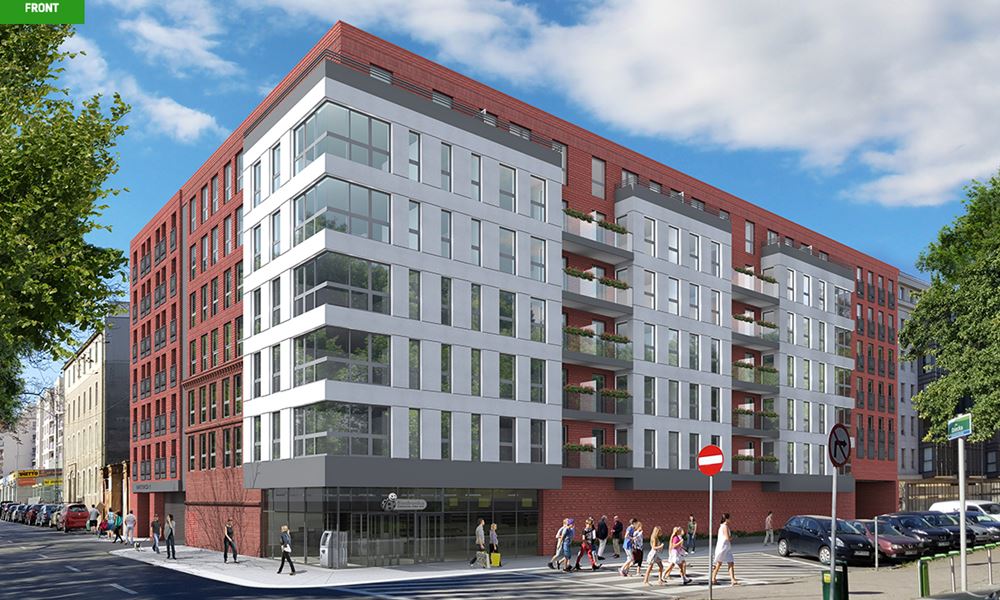Silence! We’re about to talk about cork
Silence! We’re about to talk about cork
In the future, cities will be smarter, as a direct consequence of the current dizzying pace of technological innovation. However, we expect that these smart cities will also be more sustainable and quieter, two characteristics of future urbanisation where cork has a major role to play. In this case, it’s worth saying: silence, we’re about to talk about cork!
Noise pollution
Noise pollution is a serious environmental problem in European cities, that has been recognised by the World Health Organisation. The main sources of pollution in urban areas are road, rail and air traffic, and industry (EEA Report: Environmental noise in Europe , 2020). However, since this is not a new problem, the construction industry has been looking for solutions to combat noise over recent decades and cork is an old ally in this context.
To understand why, we must look closer at this raw material - at a microscopic level: cork has a microscopic cellular structure that resembles a beehive, filled with an air-like gas, and primarily coated with suberin and lignin. The high gas content in each cell explains cork’s extraordinary lightness.
The association of these cells, as if they were a small set of cushioned pads, explains the cells’ compressibility and elasticity. These characteristics also mean that cork has exceptional performance in terms of sound absorption.
Sound absorption depends on the existence of pores and gaps in the connections between materials, which cause sound energy to dissipate, in the form of mechanical waves that circulate inside. Cork is a good option for any building application where such characteristics are valued, for example: control of vibrations in buildings, or insulation against sound transmission.
Cork can be found anywhere
Beyond the microscopic level and focusing on practical issues, cork can be found in a newly-purchased apartment, in our company’s office building, or in the public building across the street, without us even realising it. It may be between the walls and under our noses, or rather under our feet. At the ground level, cork offers a high level of performance with reduced thickness, protecting the floor of the building, guaranteeing the capacity to withstand high, repeated, short-duration loads.
One example is underscreed, which provides acoustic insulation. Applied in adjacent vertical rooms, underscreed makes it possible to reduce sound transmission, as well as achieving the necessary acoustic comfort in the building.
Another application where cork is valued is in the support base of the walls, since it prevents the propagation of low frequency sounds in the building, by decoupling the elements.
A supermarket
Poland - a supermarket located on the ground floor of a new residential building. This required a highly efficient solution to ensure silence and comfort in the building's 118 apartments. An underscreed from the Accousticork range was applied across the entire floor of the commercial area. Applied to the flooring, this resilient underscreed reduces noise and impact, making a decisive contribution to residents’ quality of life.

A supermarket
Poland - a supermarket located on the ground floor of a new residential building. This required a highly efficient solution to ensure silence and comfort in the building's 118 apartments. An underscreed from the Accousticork range was applied across the entire floor of the commercial area. Applied to the flooring, this resilient underscreed reduces noise and impact, making a decisive contribution to residents’ quality of life.
---
The sustainability factor
Depending on the specific type of application, several materials in the market, with a synthetic or inorganic base, are competing with cork. Rubber- or foam-based materials have dominated the world market, since they combine performance with low costs.
However, the situation has been changing over recent years, due to more rigorous requirements related to the negative health impacts of these synthetic materials, caused by the release of volatile components. For this reason, use of these synthetic solutions is expected to decline in several countries, also catalysed by another key factor, which will revolutionise the future of the construction of our cities – sustainability - which is an increasing concern for consumers, societies, government institutions and regulatory bodies. In this context, cork has a great deal to offer.
It stands out because it introduces a natural component in an area that is excessively dependent on synthetic materials, combining performance with long-term sustainability, not only due to its negative carbon footprint, but also in view of the harmful chemical components found in other materials. Cork delivers a higher quality of life, with a lower environmental impact. These are the prime characteristics that cork brings to cities.
Polymers and the circular economy
Although this is an article about silence, since we are talking about cork’s impact on the quality of life in urban contexts, it would be absurd to focus solely on cork's acoustic performance. Cork is valued in the building industry due to many other characteristics, in particular the fact that it offers excellent thermal insulation and is resistant to fire and friction. It is a material that is pleasant to the touch, fosters comfort and is aesthetically attractive. It is therefore not surprising that cork is increasingly chosen by leading architects and designers worldwide.
Further research and innovation are required to respond to the increasingly rigorous requirements posed by these markets and consumers, without ignoring the question of sustainability. These are the fundamental pillars that enable cork to go further every day. Examples include combinations of cork with polymers from different sources. This has not only exponentially multiplied cork’s potential applications, but also makes it possible to embrace the circular economy, an area where Amorim Cork Composites (ACC), the composite cork business unit of Corticeira Amorim, is a pioneer and leader. Projects have been carried out in the four corners of the world, such as the Four Seasons Hotel in Bangkok, where a cork underscreed with recycled rubber was applied throughout the hotel area, in order to meet the rigorous acoustic performance requirements specified in the building project. In the case of the Lisbon Cruise Terminal, designed by the architect Carrilho da Graça, Amorim Cork Composites, in partnership with Secil and the University of Coimbra, developed a new type of lightweight structural white concrete, with cork granulate, that was used in the terminal’s façades. The composite cork solution made it possible to reduce the overall weight of the building's structure, while maintaining the structure's strength, and improving its comfort and energy efficiency.
The fact that cork has a negative carbon footprint also favourably influences any analysis of a product’s life cycle and, most important of all: it has a positive impact on the planet.
Four Seasons Hotel
Bangkok, Four Seasons Hotel. The underscreed from Acousticork range, combines agglomerated cork with recycled rubber, making it a 100% recycled and sustainable product. In addition to acoustic comfort, the use of an underscreed also improves the building’s thermal performance, making a decisive contribution to the well-being of the building’s users.

Four Seasons Hotel
Bangkok, Four Seasons Hotel. The underscreed from Acousticork range, combines agglomerated cork with recycled rubber, making it a 100% recycled and sustainable product. In addition to acoustic comfort, the use of an underscreed also improves the building’s thermal performance, making a decisive contribution to the well-being of the building’s users.
---